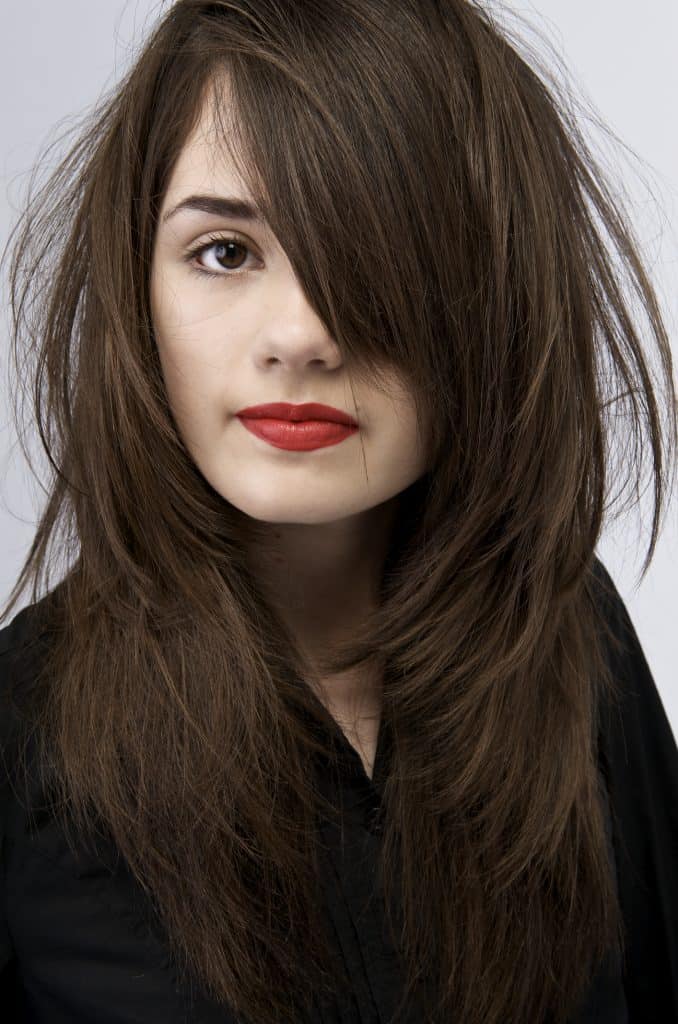Have you ever wondered what makes certain hair types unique and rare? Hair texture is one of the most fascinating aspects of human diversity, and understanding the rarest hair type can give you a deeper appreciation for this natural phenomenon. In this article, we will explore the rarest hair type and delve into its characteristics, genetics, and cultural significance.
From curly to straight, fine to coarse, hair types vary widely across the globe. However, some textures are rarer than others, making them stand out in the world of hair diversity. Understanding these rare textures can help us appreciate the complexity of human genetics and the beauty of individuality.
In this comprehensive guide, we will uncover the secrets behind the rarest hair type, explore its scientific basis, and discuss how it impacts people's lives. Whether you're curious about your own hair type or simply fascinated by the diversity of human hair, this article will provide you with all the information you need.
Read also:What Was Christopher Scarver In Jail For Unveiling The Truth Behind The Infamous Story
Table of Contents
- What's the Rarest Hair Type?
- Understanding Hair Types
- The Genetics Behind Hair Types
- Hair Texture Classification
- Caring for Rare Hair Types
- Cultural Significance of Rare Hair Types
- Common Myths About Rare Hair Types
- Statistics on Hair Types
- Famous People with Rare Hair Types
- Conclusion
What's the Rarest Hair Type?
The rarest hair type is often considered to be Type 4C hair, which is a tightly coiled, kinky texture commonly found in people of African descent. This hair type is characterized by its compact curls and minimal definition, making it distinct from other textures. While it may not be the rarest in terms of global distribution, its unique properties make it stand out in the world of hair diversity.
In addition to Type 4C, there are other rare hair types that occur due to genetic mutations or specific ethnic backgrounds. For example, some individuals may have extremely fine, straight hair or unusually thick, coarse hair, both of which are relatively uncommon in the general population.
Understanding the rarest hair types requires a deeper dive into the science of hair genetics, texture classification, and cultural perceptions. Let's explore these aspects in more detail.
Understanding Hair Types
Categories of Hair Types
Hair types are generally categorized into four main groups: straight, wavy, curly, and kinky. Each group has subcategories that further define the texture and pattern of the hair. For example, within the curly category, there are different levels of curl tightness, ranging from loose waves to tightly coiled curls.
Here are some common hair types and their characteristics:
- Straight Hair (Type 1): Smooth and flat, with no visible curl pattern.
- Wavy Hair (Type 2): S-shaped waves with a loose curl pattern.
- Curly Hair (Type 3): Defined curls that range from loose spirals to tight corkscrews.
- Kinky Hair (Type 4): Tightly coiled curls with minimal definition, often found in people of African descent.
The Genetics Behind Hair Types
Hair texture is primarily determined by genetics, with specific genes responsible for the shape and structure of hair follicles. The shape of the hair follicle dictates whether the hair will be straight, wavy, curly, or kinky. For example, a round follicle produces straight hair, while an oval-shaped follicle creates wavy or curly hair.
Read also:Rodney Ramone Hill Iii The Rising Star In The Entertainment World
Recent studies have identified several genes associated with hair texture, including the EDAR gene, which is linked to thicker, straighter hair in East Asian populations, and the TRHR gene, which contributes to curly hair in people of European descent. These genetic variations highlight the complexity of hair diversity and explain why some hair types are rarer than others.
Hair Texture Classification
Andre Walker's Hair Typing System
One of the most widely used systems for classifying hair texture is the Andre Walker Hair Typing System. This system divides hair into four main categories (1-4) and further subdivides each category into subtypes (a-c or a-d) based on curl pattern and texture. Here's a breakdown of the system:
- Type 1: Straight Hair (1a, 1b, 1c)
- Type 2: Wavy Hair (2a, 2b, 2c)
- Type 3: Curly Hair (3a, 3b, 3c)
- Type 4: Kinky Hair (4a, 4b, 4c)
This classification system helps individuals identify their hair type and choose appropriate products and styling techniques. However, it's important to note that hair texture can vary widely even within the same subtype, making it challenging to classify some rare textures.
Caring for Rare Hair Types
Caring for rare hair types requires a tailored approach, as these textures often have unique needs and challenges. For example, Type 4C hair may require extra moisture and protection to prevent breakage, while extremely fine hair may need lightweight products to avoid weighing it down.
Here are some tips for caring for rare hair types:
- Use sulfate-free shampoos to preserve natural oils.
- Apply deep conditioners regularly to maintain moisture.
- Protect hair from environmental damage with scarves or hats.
- Avoid heat styling tools to prevent damage.
By understanding the specific needs of your hair type, you can develop a routine that promotes healthy growth and enhances its natural beauty.
Cultural Significance of Rare Hair Types
Hair texture has played a significant role in various cultures throughout history. In some societies, rare hair types are celebrated as symbols of beauty and individuality, while in others, they may face discrimination or misunderstanding. For example, the natural hair movement has empowered many people with Type 4C hair to embrace their unique texture and challenge societal norms.
Cultural perceptions of hair can also influence how individuals care for and style their hair. Understanding the cultural significance of rare hair types can help promote acceptance and appreciation for all forms of human diversity.
Common Myths About Rare Hair Types
There are several myths surrounding rare hair types that can lead to misconceptions and misinformation. Here are a few common myths and the truths behind them:
- Myth: Rare hair types are harder to style. Truth: With the right products and techniques, any hair type can be styled beautifully.
- Myth: Certain hair types are more prone to damage. Truth: All hair types can be damaged if not cared for properly, but some may require extra attention.
- Myth: Rare hair types are less attractive. Truth: Beauty is subjective, and all hair types have their own unique appeal.
Dispelling these myths can help create a more inclusive and informed community around hair diversity.
Statistics on Hair Types
While there are no definitive statistics on the prevalence of rare hair types, research suggests that certain textures are more common in specific populations. For example, straight hair is more prevalent in East Asian and European populations, while curly and kinky hair is more common in African and Afro-Caribbean communities.
A 2019 study published in the journal Human Genetics found that genetic variations in the EDAR gene were responsible for the prevalence of thick, straight hair in East Asian populations. Similarly, research on the TRHR gene has linked curly hair to European ancestry. These findings highlight the genetic basis of hair diversity and the rarity of certain textures in specific populations.
Famous People with Rare Hair Types
Biography of Celebrities with Unique Hair
Several celebrities are known for their unique and rare hair types, which have become iconic symbols of their personal brand. Here are a few examples:
- Rihanna: Known for her versatile and bold hairstyles, Rihanna often experiments with her natural Type 4C hair, showcasing its versatility and beauty.
- Solange Knowles: As a prominent figure in the natural hair movement, Solange embraces her Type 4C texture and advocates for its acceptance in mainstream media.
- Chris Hemsworth: With his fine, straight hair, Chris Hemsworth represents a rarer texture among male celebrities, often requiring specialized care to maintain its volume and shine.
These celebrities demonstrate the power of embracing one's unique hair type and using it as a form of self-expression.
Conclusion
In conclusion, the rarest hair type is a fascinating subject that highlights the diversity and complexity of human genetics. From Type 4C hair to extremely fine or coarse textures, rare hair types offer a glimpse into the beauty of individuality and the science behind hair diversity.
We encourage you to embrace your unique hair type and explore the products and techniques that work best for your texture. By sharing this article and engaging in conversations about hair diversity, you can help promote acceptance and appreciation for all forms of human beauty.
Feel free to leave a comment below with your thoughts on rare hair types or share this article with others who may find it interesting. Together, we can celebrate the diversity of hair textures and the stories they tell.

